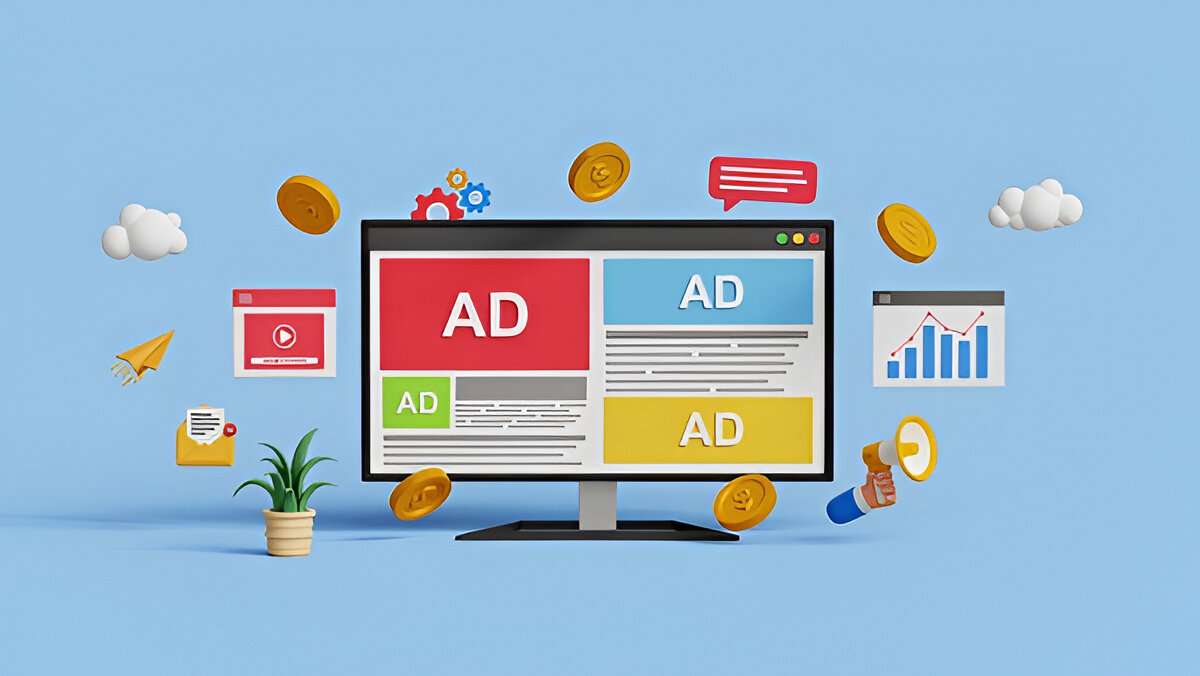The shift toward programmatic advertising is transforming the way businesses approach digital marketing strategies. “Display advertising programmatic” has emerged as a revolutionary method, significantly outpacing traditional manual buying in terms of efficiency, effectiveness, and scalability. This automated process allows businesses to streamline their ad placements and optimize their campaigns in ways that manual methods cannot match. Below, we’ll explore the key reasons why programmatic display advertising is setting a new standard in the industry.
What is Display Advertising Programmatic?
Programmatic display advertising refers to the automated process of buying, placing, and optimizing digital ads in real-time. Unlike manual buying, which requires human intervention to negotiate placements and manage campaigns, programmatic advertising relies on sophisticated algorithms to handle these tasks in seconds. Key components of programmatic advertising include Demand-Side Platforms (DSPs), Supply-Side Platforms (SSPs), and data-driven insights to deliver highly targeted ads to the right audience at the right time.
The Drawbacks of Manual Buying
While advertising has traditionally relied on human intervention, manual buying is fraught with inefficiencies that can cost businesses both time and money. Here are some of the key challenges:
- Time-intensive processes: Negotiating ad placements, contacting publishers, and managing bids manually take considerable time and effort. This often delays campaign execution and optimization.
- Limited targeting: Manual methods lack the precise targeting capabilities offered by programmatic platforms, making it harder to reach the intended audience effectively.
- Human error: Relying on manual execution increases the likelihood of errors, such as incorrect placements or inefficient budgeting.
These limitations underscore the need for a more advanced approach, which is where programmatic advertising excels.
Advantages of Display Advertising Programmatic Over Manual Buying
The rise of “display advertising programmatic” is powered by a range of benefits that far surpass what manual buying can offer. Here are the top advantages:
1. Efficiency and Speed
Programmatic advertising eliminates the need for time-consuming negotiations and manual insertion orders. By leveraging automation, brands can launch campaigns in minutes rather than days or weeks. Algorithms handle the heavy lifting, from bidding to real-time ad placements, freeing up marketers to focus on strategy.
2. Precise Audience Targeting
One of the standout advantages of programmatic advertising is its ability to use data for hyper-targeted campaigns. By leveraging first-party or third-party data, programmatic platforms can segment audiences based on demographics, behavior, geolocation, and even device usage. This precision ensures that ads are seen by those most likely to engage, improving ROI significantly.
3. Cost-Effectiveness
Automation reduces operational costs associated with manual processes, while real-time bidding prevents overpaying for ad placements. Programmatic platforms optimize budgets by allocating spend to the highest-performing placements, ensuring that no dollar is wasted.
4. Real-Time Optimization and Insights
Unlike manual buying, which relies on static planning, programmatic advertising enables real-time optimization. Campaigns can be adjusted instantly based on performance metrics, such as click-through rates (CTR) or conversions. This agility allows marketers to respond to trends and improve outcomes continuously.
5. Scalability
Whether you’re running a local campaign or targeting a global audience, programmatic advertising can scale effortlessly. Automated systems can handle thousands of impressions across multiple platforms simultaneously, making it ideal for businesses of all sizes.
The Role of Artificial Intelligence and Machine Learning
Display advertising programmatic is further enhanced by the integration of advanced technologies like artificial intelligence (AI) and machine learning. These technologies analyze vast amounts of data, predict user behavior, and optimize ad placements in real time. For instance, machine learning algorithms can identify patterns in user interactions, improving targeting accuracy and personalization over time.
AI tools also help in creating predictive models that anticipate which ad creatives will perform best for certain audiences. This level of sophistication is impossible to achieve through manual buying methods, giving programmatic advertising a clear edge.
Programmatic in Action Across Channels
Another reason why display advertising programmatic outshines manual buying is its multi-channel adaptability:
- Display Ads: Programmatic platforms ensure target audiences receive highly relevant banner ads on websites they frequent.
- Video Ads: Programmatic video ads use data-driven insights to deliver engaging content at scale across streaming platforms and social media.
- Mobile Ads: With nearly everyone owning a smartphone, mobile programmatic advertising provides unmatched reach and targeting opportunities.
- Connected TV (CTV): Programmatic advertising can even extend to smart TVs, offering precision targeting for viewers streaming content at home.
This ability to execute and optimize campaigns across diverse channels further solidifies the dominance of programmatic approaches.
Overcoming Myths and Misconceptions
Some marketers hesitate to fully adopt programmatic advertising due to misconceptions about its complexity or cost. However, modern platforms are becoming increasingly user-friendly, making it easier even for smaller businesses to get started. Additionally, programmatic advertising’s cost-effectiveness means that businesses of all budgets can benefit from its advanced capabilities.
Concerns about brand safety and ad fraud are also being addressed with the help of advanced tools such as fraud detection software and private marketplaces. These innovations ensure that programmatic campaigns deliver results without compromising a brand’s reputation.
The Future of Display Advertising Programmatic
With the advertising landscape evolving rapidly, the future of programmatic advertising looks brighter than ever. Innovations such as AI-driven personalization, data privacy advancements, and new ad formats are expected to shape the next wave of programmatic innovation. Businesses that adopt these technologies early will be better positioned to stay ahead of the competition.
Programmatic advertising isn’t just a trend; it’s becoming the industry standard. Its unparalleled efficiency, precise targeting, and real-time optimization capabilities make it an indispensable tool for modern marketers.
Final Thoughts
“Display advertising programmatic” is reshaping the way brands connect with their audiences. By automating processes, enhancing targeting, and providing valuable insights, programmatic advertising offers a superior alternative to manual buying. Companies that fully harness its potential will find themselves at a distinct advantage in today’s competitive marketplace. For businesses aiming to maximize ROI, reduce inefficiencies, and achieve scale, programmatic advertising is undoubtedly the way forward.
By replacing outdated manual processes with cutting-edge automation, display advertising programmatic proves time and again that it’s the smarter, faster, and more effective choice in digital advertising.


